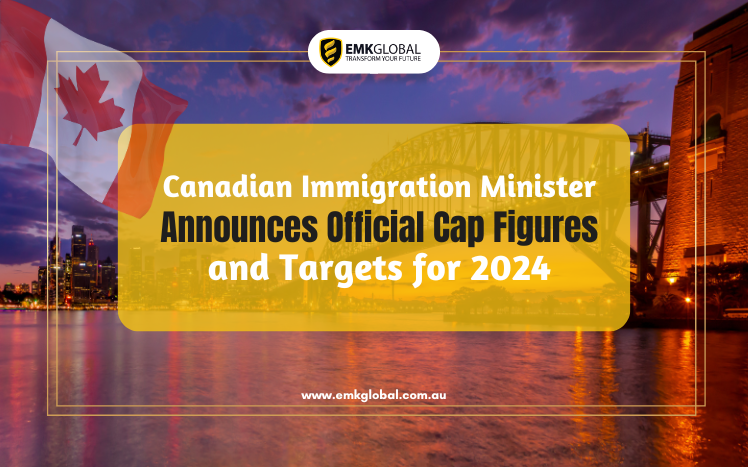Introduction
In a significant move towards managing international student enrolment in Canada, Immigration Minister Marc Miller has unveiled the official national cap figures and targets for 2024. This development marks a strategic approach by the Canadian government to regulate the influx of international students while ensuring a balanced educational landscape across provinces and territories.
Understanding the Cap Allocation
The announcement includes a cap allocation of 552,000 study permit applications for 2024. This allocation is expected to result in approximately 292,000 new study permits being issued during the year, particularly benefiting students impacted by Canada’s new international enrolment cap.
Implementation Strategy
The cap is meticulously designed to maintain foreign enrollment at zero growth compared to 2023 levels. This entails providing opportunities for increased enrolment in provinces with lower rates while concurrently decreasing study permits issued for provinces like Ontario and British Columbia.
Target Approval Rate
One crucial aspect of the announcement is the target approval rate for study permit applications in 2024, set at 53%. This rate represents a deliberate reduction from the historical average of 60%, signifying a strategic shift in managing international student intake.
Insights from Minister Marc Miller
Minister Miller elucidates on the rationale behind these measures, stating that the national cap is based on expiring study permits in the current year. This approach aims to align the number of incoming international students with the number whose permits expire, ensuring a balanced educational ecosystem.
Adjustments and Exemptions
The minister also highlights exemptions from the cap, such as primary and secondary school students and certain degree-seeking students. These exemptions, based on 2023 data, contribute to refining the target numbers for approved study permits in 2024.
Provincial and Territorial Allocations
The detailed statement released by Minister Miller outlines the allocation model across provinces and territories. This allocation strategy takes into account variations in provincial enrolment capacities and approval rates, contributing to a nuanced distribution of study permits.
Summary of Cap Allocation Model
The table below summarizes Canada’s international study permit cap allocation model for 2024:
| Province/Territory | Total Allocated Applications | Projected Approved Permits | Change from 2023 |
| Alberta | 27,300 | 15,436 | -12% |
| British Columbia | 104,000 | 58,848 | -24% |
| Manitoba | 12,500 | 7,050 | -19% |
| Ontario | 202,000 | 113,952 | -29% |
| Quebec | 120,500 | 68,120 | -14% |
| Saskatchewan | 12,200 | 6,892 | -17% |
| Territories | 5,500 | 3,104 | -22% |
Key Takeaways
- The official cap figures and targets for 2024 reflect a strategic approach by the Canadian government to manage international student enrolment.
- The target approval rate of 53% indicates a deliberate reduction from previous years, aiming to control the influx of study permit applications.
- Provinces and territories have been allocated study permit applications based on their capacity and historical enrolment trends, contributing to a balanced distribution.
Conclusion
The announcement by Immigration Minister Marc Miller underscores Canada’s commitment to maintaining a balanced and sustainable educational environment for both domestic and international students. The strategic allocation of study permits for 2024 reflects a nuanced approach towards managing enrolment while ensuring quality education opportunities.
FAQs
What is the significance of the 53% approval rate for study permit applications?
- The 53% approval rate reflects a deliberate strategy by the Canadian government to manage and control the influx of international students while ensuring a balanced educational landscape.
How will the cap allocation impact provinces like Ontario and British Columbia?
- Provinces with higher enrolments, such as Ontario and British Columbia, will experience a decrease in study permits issued, aligning with the national cap’s objectives.
Are there any exemptions from the cap for specific student groups?
- Yes, certain groups such as primary and secondary school students, as well as some degree-seeking students, are exempt from the cap allocation.
What factors influenced the target approval rate of 53%?
- The target approval rate is influenced by various factors, including provincial capacities, historical approval rates, and the government’s objective to maintain enrolment at zero growth.
How does the cap allocation model contribute to a balanced educational ecosystem?
- The allocation model considers provincial capacities and approval rates, ensuring a balanced distribution of study permits across provinces and territories.


